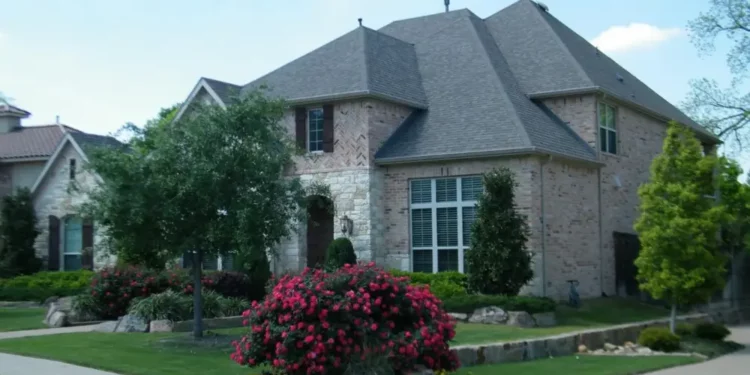There are many commercial roofing systems, so choosing the right one for your business or property is a complex decision. It relies on your building’s design and construction materials, local climate, and financial constraints. Choosing the right commercial roof for your needs can significantly affect how well your roof protects your investment and prevents costly repairs. This guide will walk you through selecting the best roofing system for your commercial property. Include building height, wind exposure, roof traffic, anticipated weather and aesthetics.
Maintenance
A roof is a building’s most significant investment, and it’s crucial to treat it properly. Failure to stay on top of maintenance and repairs could mean severe and unexpected expenses interfering with your business operations. Establishing a maintenance plan is crucial to preventing these problems. It will ensure you receive the best possible service from your roofing system and save you money. In addition to keeping your roof functioning as it should, a proactive maintenance program will also increase your building’s energy efficiency. A clean, efficient roof can lower your HVAC costs and keep inlet air temperatures 5 to 15 degrees cooler than other roofing systems. It’s essential to perform a complete inspection of your commercial roof every year, as this will allow your local commercial roofing company to pinpoint any problems lurking. These issues could be minor or severe, and they’ll need to be addressed to prevent extensive damage from occurring. In addition to identifying potential problems, your local commercial roofing contractor, like the commercial roofing contractor in Kansas City, will also clean your roof and gutters to remove any debris collected over time. Debris can cause your roof to deteriorate, which could lead to leaks and significant repairs.
Installation
When it comes time to install a new commercial roof, there are a few essential things to remember. First, the slope of your roof is a critical factor to consider. Commercial roofing systems are typically installed on flat or low-sloped roofs. It is due to the size of the building. Residential buildings, on the other hand, are generally built with steep slopes. Choosing the right commercial roofing system depends on the type of building and the owner’s needs. A thorough evaluation by a licensed commercial roofing contractor can help you choose the suitable material and installation method for your business’s needs. Several roofing materials can be used on commercial roofs, including single-ply membranes and modified bitumen. These materials are available in various colors and have a long service life. Modified Bitumen (MB) is a modified version of BUR that offers additional flexibility and temperature resistance. It is a preferred choice for many commercial roofing projects because of its durability and ease of installation. An MB roof is often installed in multiple layers, usually in two to three. Depending on the manufacturer’s recommendations, these layers are adhered with asphalt and bonded together through hot-mopped or torch-applied adhesives. Commercial roofing projects can take longer than residential ones, especially if the roof is large or complex. Factors affecting the timeline
Inspection
If you own a commercial building, you should schedule roof inspections at least twice a year. These can help you avoid costly repairs and extend the life of your roof. A quality roofing inspector will examine every part of your roof. They will look for anything that could cause issues in the future, such as rust, water stains, or debris. They will also closely examine all areas where drains and other things connect to your roof. They will check for leaks and damage in these areas, and they may also give your HVAC units a quick evaluation. Once the inspector is finished, they will send you a report that outlines the inspection process. The information will include photos of the problem areas and any recommendations that must be addressed. A roofing inspector will inspect all areas of your roof, starting from the perimeter. They will check the edges of your roof for damage that has caused the materials to sag or lift. They will also check for any signs of ponding. It can indicate significant problems and must be addressed as soon as possible.
Materials
Commercial roofing systems are designed to protect buildings and their contents from water damage, weathering, and other hazards. They are available in various materials, sizes, and forms to meet different demands.
Flat Roofs: Most commonly used on commercial structures, flat roofs are less expensive and faster to install than steeper sloped roofs. They help prevent standing water and material deterioration, simplifying maintenance and repairs.
TPO (Thermoplastic Polyolefin) roofing is another type of material growing in popularity. This material is a synthetic rubber with a good track record as a commercial roofing membrane. This rubber roof has a darker color that helps reflect the sun’s heat, helping to keep the building cool. It is also resistant to ozone, fungus, and mildew and is lightweight.
Modified Bitumen Roofing is one of the large commercial buildings’ most common roofing options. It is tear-resistant, easy to repair and has an extended warranty period.
Metal roofing is another popular option for commercial buildings. It is a robust, durable roofing system made from zinc alloys, copper, aluminum, and other metals.
Also, Read: How to Save Money on Home Insurance Without Sacrificing Coverage

















